Photo Essay by James Kenney
A Congo Hospital that Changed the World
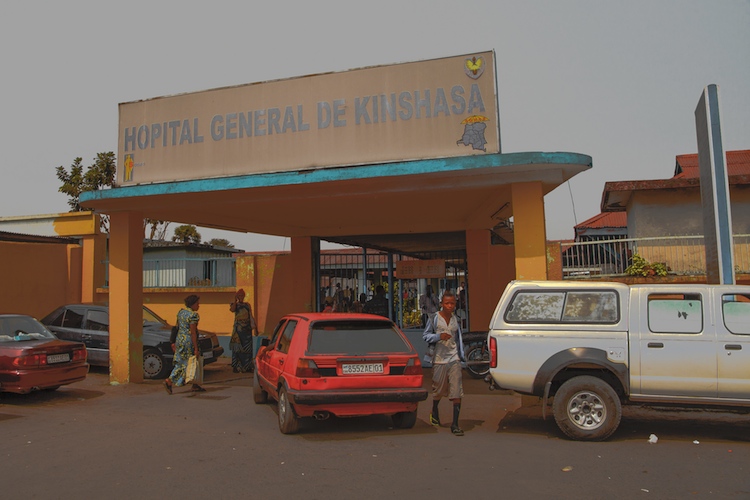
I was a competitive swimmer as a child, which many years later, far from Peoria, must have helped me hold my breath. At the Kinshasa General Hospital, I instinctively recoiled when a nurse pulled out the blood samples. My coming of age as a young gay man in the 1980s coincided with the AIDS epidemic—and I now had a visceral fear of infection in this hospital, once known by the seemingly innocuous name of Mama Yemo.
In 2013, I travelled to Kinshasa, the capital of the Democratic Republic of the Congo, the Belgian Congo of Joseph Conrad’s Heart of Darkness. I was there with my co-director, Bonnie O’Neill, to film a documentary about an American family that had lived in then-Zaire during 1976. I’d never been to the Congo before. Stepping into any new country always unnerves and exhilarates me, but the first thing I noticed was the air—like wading through a curry or cumin, through pungent human smoke.
I felt overwhelmed by the constant bumping. Getting from A to B, you’re jostled among thousands of people doing the same. My Belgian expat guide found the chaos thrilling, but I felt very vulnerable. There was only one flight in and out each day from all of Europe. I was an obvious foreigner in a maelstrom.
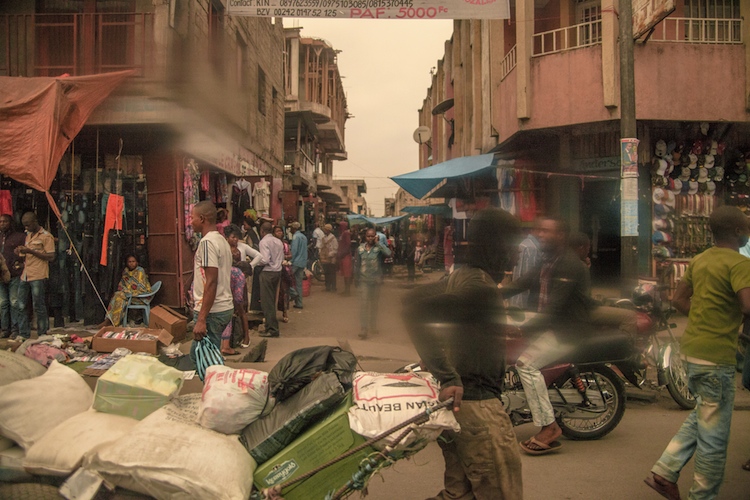
At the time, Kinshasa was inhabited by an estimated nine million people. (There hasn’t been a census since 1984.) Residents refer to it as Can City, because so many dwellings are capped with corrugated metal roofs. Most people live without electricity or running water. They burn scrap wood for cooking. Yet despite the muddle and tangle of daily endurance, it’s a place of vast dignity in dress and demeanor.
I never noticed a single instance of crime or strife during my short trip. I did see police and soldiers, but in no numbers that could constrain true anarchy. The people of the Congo are expected to survive by their wits, not government help, and the hospital is an example of this in action—in both moving and horrific ways. We were given a tour by a small older nurse, who shuffled down the dusty corridors. I have photos of Mama Yemo from 1976; not much appears to have changed. Desperate patients lay queued in open-air walkways, awaiting care they cannot afford.
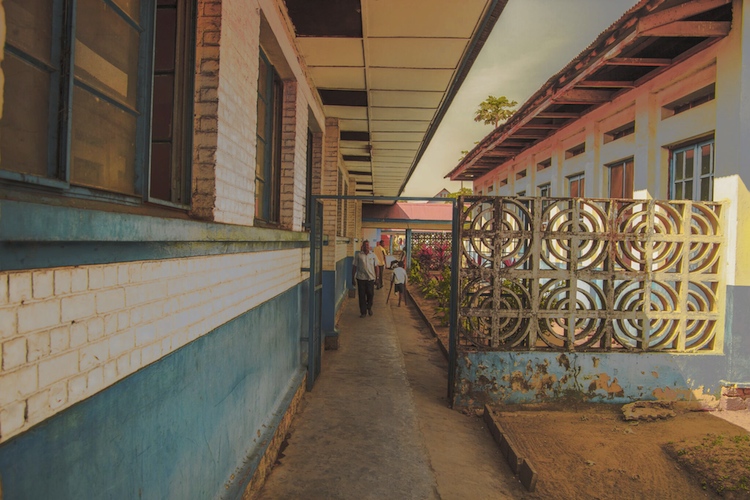
From 1960 to 1997, the Congo was ruled by Mobutu Sese Seko, a dictator who abandoned his people to what he casually enacted as Article 15, an unwritten amendment to the constitution that still abides. It stated that the people should take care of themselves. As long as it didn’t challenge Mobuto's order, they could do whatever was necessary to survive. Meanwhile, tactical instability veiled theft at the highest levels, as the government maintained severe prisons to punish even minor infractions.
Mobutu was far from the first to abandon the Congo, one of the longest-exploited countries on the planet. Its wealth of natural resources left its people enslaved to outsiders like King Leopold II of Belgium. Remnants of the Belgian Congo remain in the capital, including a once-premiere hospital for the treatment of tropical diseases built in 1926.
After a chaotic rush to independence in 1960, and the struggle for power that followed, Mobutu fostered African identity through renaming. The country became Zaire, the capital of Léopoldville became Kinshasa, and the hospital became Mama Yemo in honor of his mother. Some believed her to be a moderating influence on Mobutu; after her death in 1971, his megalomania grew. Despite his deposition in 1997, the Congo, its people, and their biggest hospital still suffer from decades of neglect.
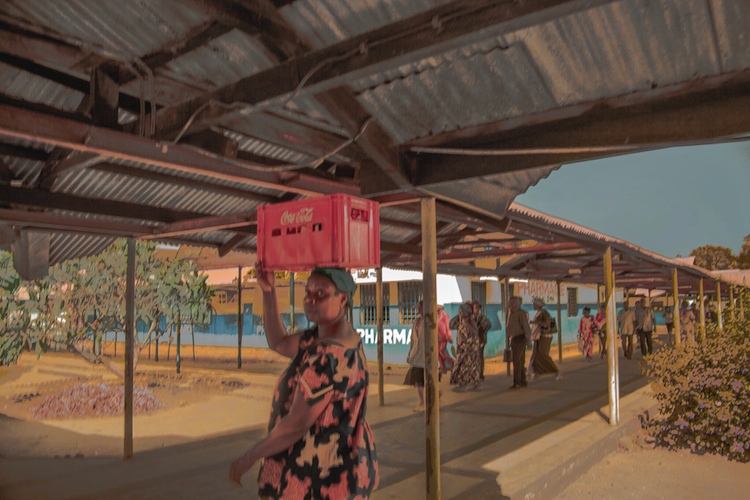
In 1976, some of the first-identified cases of Ebola traveled from the remote jungle to Mama Yemo. And in the 1980s, as AIDS was recognized in the West, some pointed to familiar symptoms identified earlier at the Kinshasa hospital. The 2012 book Tinderbox by Washington Post reporter Craig Timberg and AIDS researcher Daniel Halperin provides genetic confirmation for long-held suspicions about the disease’s origins. They show that HIV traveled from the forests of Cameroon and eventually found a foothold at Mama Yemo Hospital.
Timberg and Halperin argue that HIV had existed in the jungle for centuries, but the disease didn’t spread beyond central Africa until Europeans enslaved the native people. Colonialism forcibly moved them along trade routes, crowded them into townships, and changed their sexual practices. Before that, HIV likely burned out within the limited sexual relationships of small tribes; it didn’t cross big rivers. But because the Belgian Congo wasn’t prepared for independence, many foreign diplomats were recruited in the early ‘60s. It’s likely that HIV then crossed oceans when those envoys returned to their home countries.
Civilization gave HIV the tinder it needed to spread throughout the world.
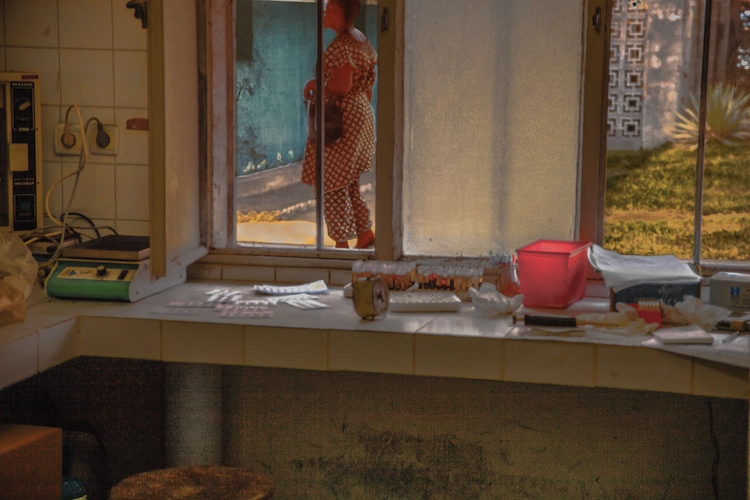
It’s a grim achievement—sparking the AIDS epidemic—and Mama Yemo symbolizes many of the Congo’s woes. During our hospital tour, we learned that treatment indebts patients’ families, who pay a ransom for their release. The few who receive beds are in more advanced stages of illness. The staff we observed didn’t have the luxury of sweating the details. The air was stale and dense. Egg timers went unanswered. Food and trash lay on laboratory surfaces.
In the maternity ward, we saw what appeared to be many healthy women—clearly bored—who had initially experienced birth complications, the nurse told us. At first, I didn’t realize their babies were also in the beds, usually swaddled in a corner. Both mother and baby were being held hostage by the hospital because their bills were unpaid. It was, in effect, a maternity jail.
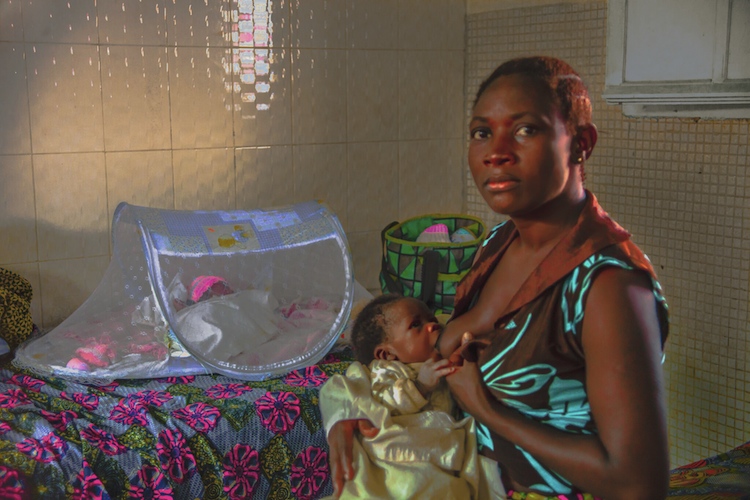
The hospital administrator was a pleasant and helpful middle-aged man with a flashy watch. He explained, with a regretful shrug, that relatives and friends of the mothers still needed to raise the money for their release. In his office, there were shelves that reminded me of a barren thrift store. They contained random objects of little worth: clothing, boom boxes, cheap jewelry. Each had already been valued toward a mother’s debt.
The only time I shut off my camera in the Congo came in the next ward. Two women in richly-patterned pagnes were helping their sick elderly male relative out of a bed. It was a long process, and it took awhile before I realized they were lowering him onto a bucket on the floor.
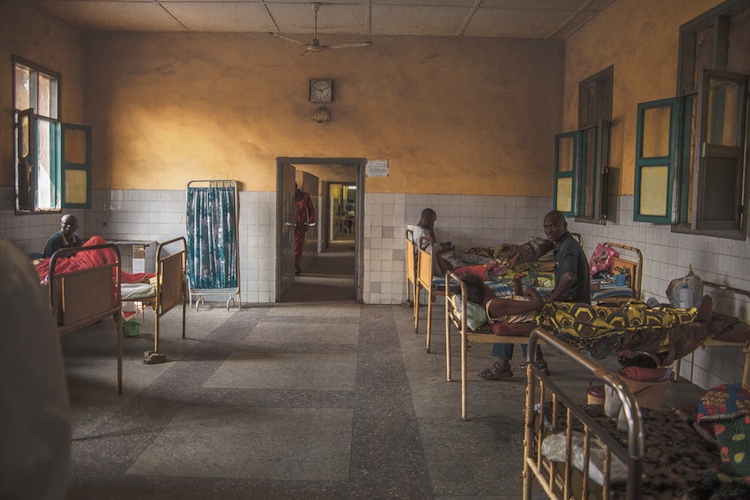
Regardless of such personal moments, no one gestured for me to stop filming at Mama Yemo. In fact, some patients didn’t even seem to track my presence. They were like open-eyed zombies without rights. They’d been deemed sick enough to receive care and would not jeopardize that privilege. Throughout Kinshasa, people told me, “No camera,” but at the hospital, individual people seemed to have lost their integrity of self. I had the permission of the state, therefore they were beholden.
I asked the administrator how the hospital could most benefit from financial assistance. He explained that monetary grants weren’t recommended; corruption would likely absorb them. A nurse said clean bed linen would be the most helpful.
Directly outside the hospital gates was a sales display of burial wreaths—synthetic colorful flower arrangements—some big enough for the winners’ circle of a horse race. These vendors were betting against cures.
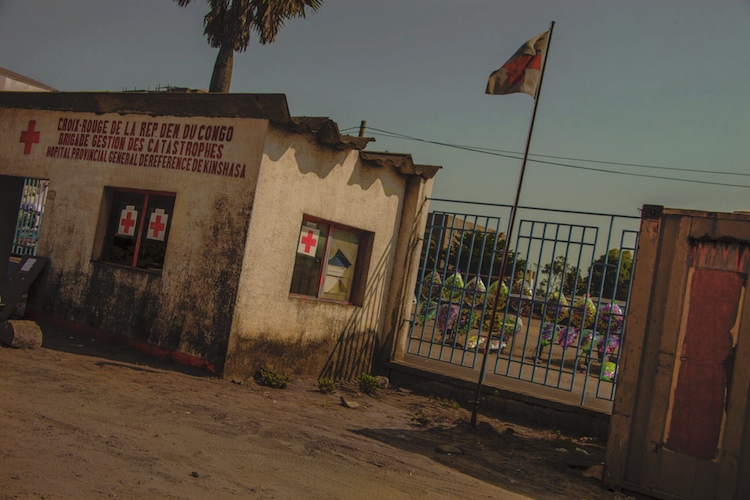
And so it rolls on in the Congo. China builds infrastructure to control precious metals, as the developed world ignores the rightful beneficiaries. The government barely holds power for its own sake. Ebola breaks out again. The horror! The horror!
Publishing Information
- The 2013 population estimate is from Demographia World Urban Areas: 13th Annual Edition, Demographia, April 2017.
- Tinderbox: How the West Sparked the AIDS Epidemic and How the World Can Finally Overcome It by Craig Timberg and Daniel Halperin (Penguin, 2012).
- Jim’s 2018 documentary with co-director Bonnie O’Neill is entitled Housewife in the Heart of Darkness. In it, a Dust Bowl matriarch confronts her daughter’s sexual abuse, paralleling the historic exploitation of the Congo.
Art Information
- Photos of Kinshasa and its General Hospital © James Kenney; used by permission.
 James Kenney is an artist, designer, writer, and filmmaker. He has produced and directed three feature documentary films. Jim completed the Practical Film Laboratory at Pixar Animation Studios and was an associate professor of design and film for thirteen years at the California College of the Arts. He has contributed to film projects that have received awards from Sundance, the Academy of Motion Picture Arts and Sciences, and other prominent international organizations.
James Kenney is an artist, designer, writer, and filmmaker. He has produced and directed three feature documentary films. Jim completed the Practical Film Laboratory at Pixar Animation Studios and was an associate professor of design and film for thirteen years at the California College of the Arts. He has contributed to film projects that have received awards from Sundance, the Academy of Motion Picture Arts and Sciences, and other prominent international organizations.
You’ll find more information about Jim at his website InterStitch.
An earlier version of this photo essay appeared as “Crossing Big Rivers” in Wanderlust Journal (March 31, 2018).
